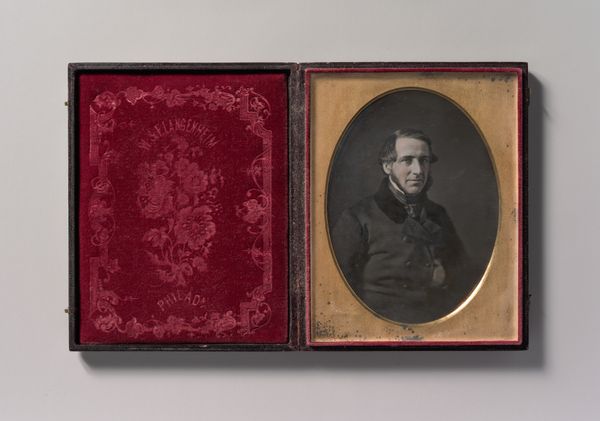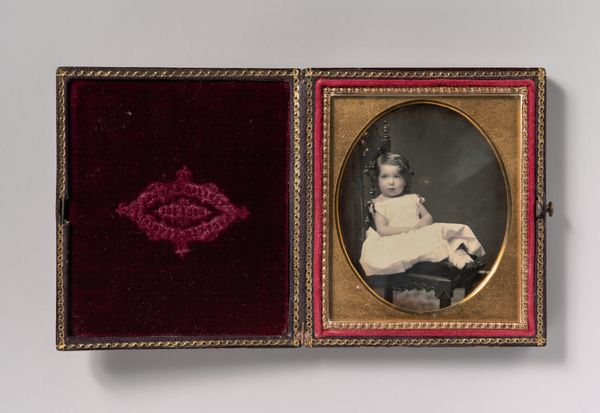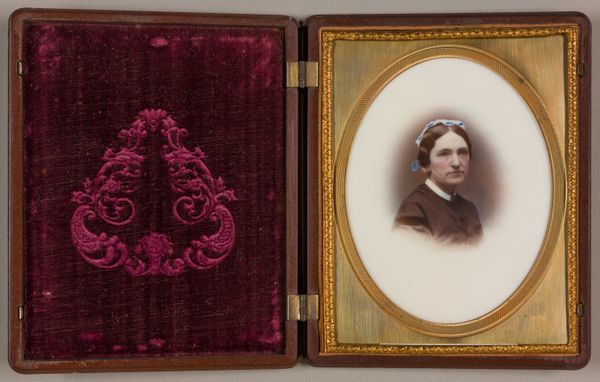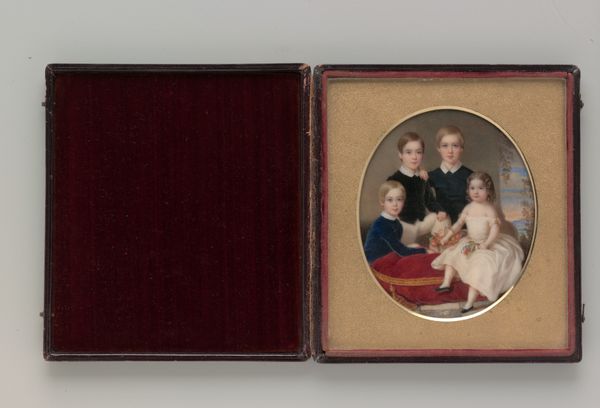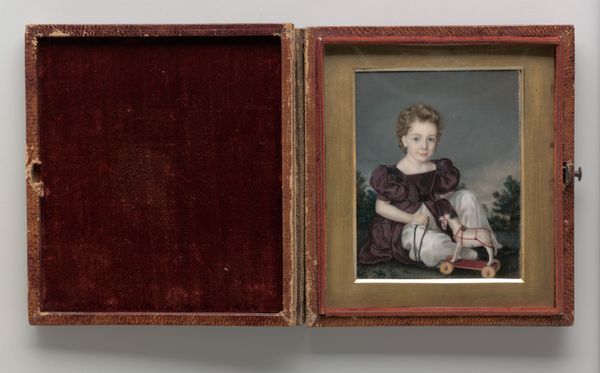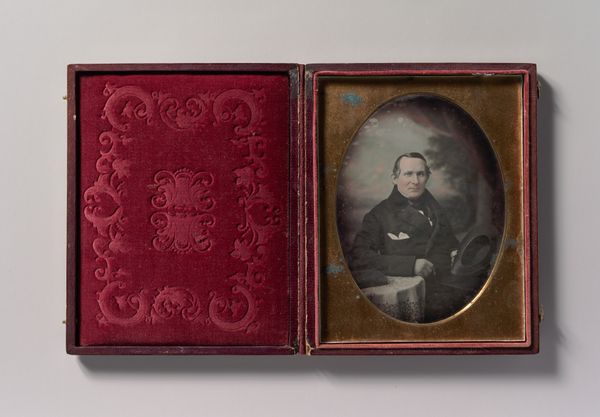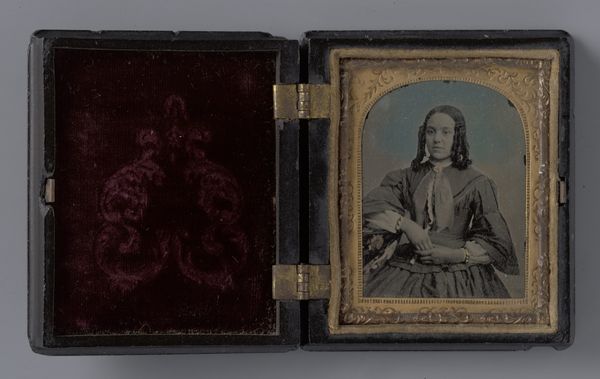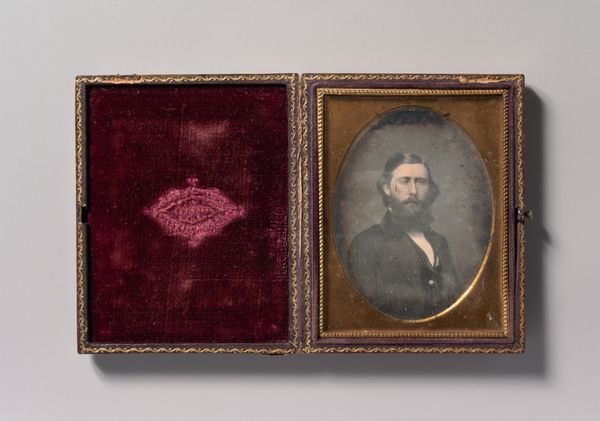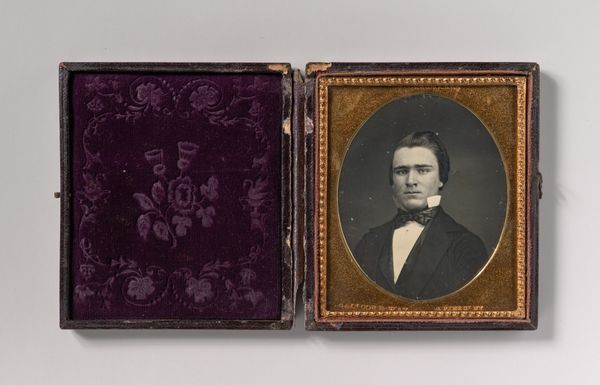
Josiah Bunting, 85, with George M. Bunting, 17 Months 1850s
0:00
0:00
Dimensions: Image: 8.8 x 6.8 cm (3 7/16 x 2 11/16 in.) Plate: 10.8 x 8.3 cm (4 1/4 x 3 1/4 in.) Case: 2.2 x 11.7 x 9.2 cm (7/8 x 4 5/8 x 3 5/8 in.)
Copyright: Public Domain
This sixth-plate daguerreotype captures Josiah Bunting, aged 85, with George M. Bunting, a mere 17 months old; it was made by Samuel Broadbent Jr. sometime in the mid-19th century. This intimate portrait, housed in a decorative case, speaks volumes about the rise of photography as a tool for memorializing loved ones in the United States. As photography became more accessible, it offered a new way for families to preserve their legacies and express familial bonds. The daguerreotype, with its sharp detail and delicate surface, became a treasured object, often passed down through generations as a tangible link to the past. Consider the social implications: who had access to such technology? What values did these images promote? By studying portraits like this alongside census records, diaries, and business documents, we can start to understand the complex social landscape of 19th-century America. Art history helps us understand the values and power structures of a particular moment.
Comments
No comments
Be the first to comment and join the conversation on the ultimate creative platform.

